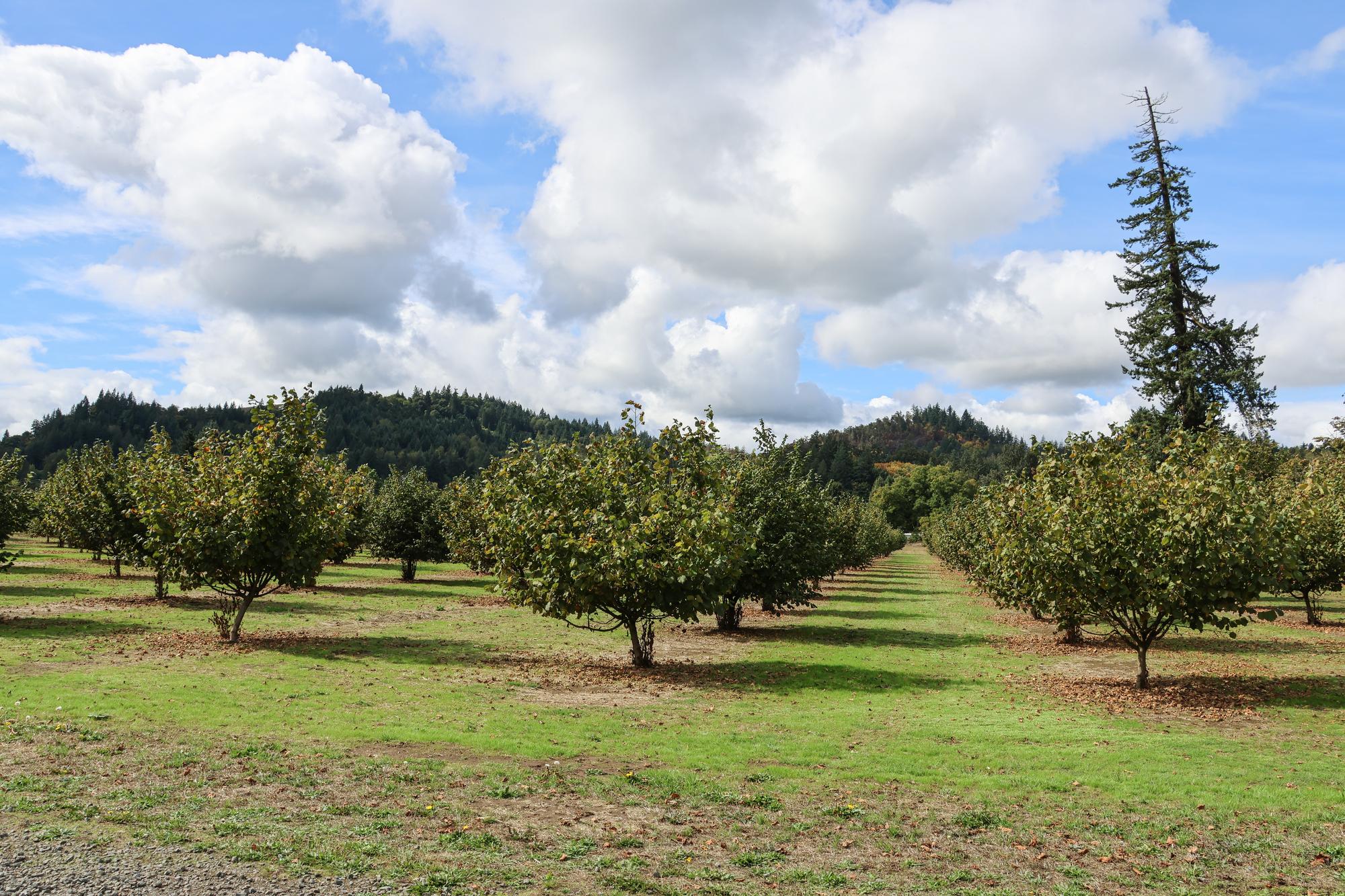
Dorris Ranch
Dorris Ranch is a large, 268-acre park and commercial filbert orchard just south of Downtown Springfield. Dorris Ranch features miles of gravel, paved, and natural-surface trails that weave through riparian woodland and oak prairie habitats. Dorris Ranch also serves as the western access point of the paved, 4-mile long Middle Fork Path, which runs to Clearwater Park.
Dorris Ranch is recognized as the first commercial filbert orchard (started in 1892) in the United States and is listed on the National Register of Historic Places. More than half of all the commercial filbert trees now growing in the U.S. originated from Dorris Ranch nursery stock.
View the Dorris Ranch Master Plan.
Park Notices
- ODF will be conducting controlled pile burns of hazardous fuels throughout the winter, beginning Nov. 5.
Rent the Park
Dorris Ranch is a popular venue! The barn, Tomseth House, and surrounding area make for beautiful venues for celebrations, reunions, weddings, and corporate events. It offers ample parking, fully equipped restrooms, and various packages for different events.
Living History
Willamalane's Living History program concluded its operations in the spring of 2025. Instead, Willamalane has partnered with a local organization to offer educational and culture-based programming at Dorris Ranch.
Starting on Sept. 23 2025, Singing Creek Educational Center, a living history nonprofit in Lane County, will host field trips, special events, and more for families and classroom teachers. To book an experience with them, please visit their website.
Ecological Burning
Willamalane conducts periodic controlled ecological burns in the oak prairie at Dorris Ranch in an effort to restore fragile oak habitat. Learn more.
Treatment Information
To ensure the health of the historic filbert orchards at Dorris Ranch, Willamalane applies regulated fungicides, herbicides, and insecticides recommended by Oregon State University and the Oregon Department of Agriculture. Willamalane does not use Class 1 (“Danger” label) or Class 2 (‘Warning” label) products when treating the orchards. To receive email notifications for Dorris Ranch closures, sign up here.
Dorris Ranch Orchard Replacement
In November 2024, Willamalane removed roughly 40 acres of filbert trees in the Briggs, Clump, Cherry, Black Walnut, Goat, and Walnut South orchards due to Eastern Filbert Blight. In January 2025, 3,500 blight-resistant filbert trees were planted. Learn more.
Fast Forest
Willamalane partnered with Endless Mileage to create the Fast Forest, which celebrates American athletes who have run one mile in under four minutes (men) or four minutes and thirty seconds (women and non-binary). Each time an athlete reaches this milestone, Endless Mileage dedicates a tree and donates the cost of a filbert tree to support the orchard. Each tree in the Front Cherry, Nursery, Mann, and Snell orchards honors one of these runners with a tag bearing the athlete’s name, mile time, and the date and location of their achievement. Currently, there are more than 750 blight-resistant trees in the Fast Forest. As more runners break the speed barrier, the number of trees will continue to grow.
